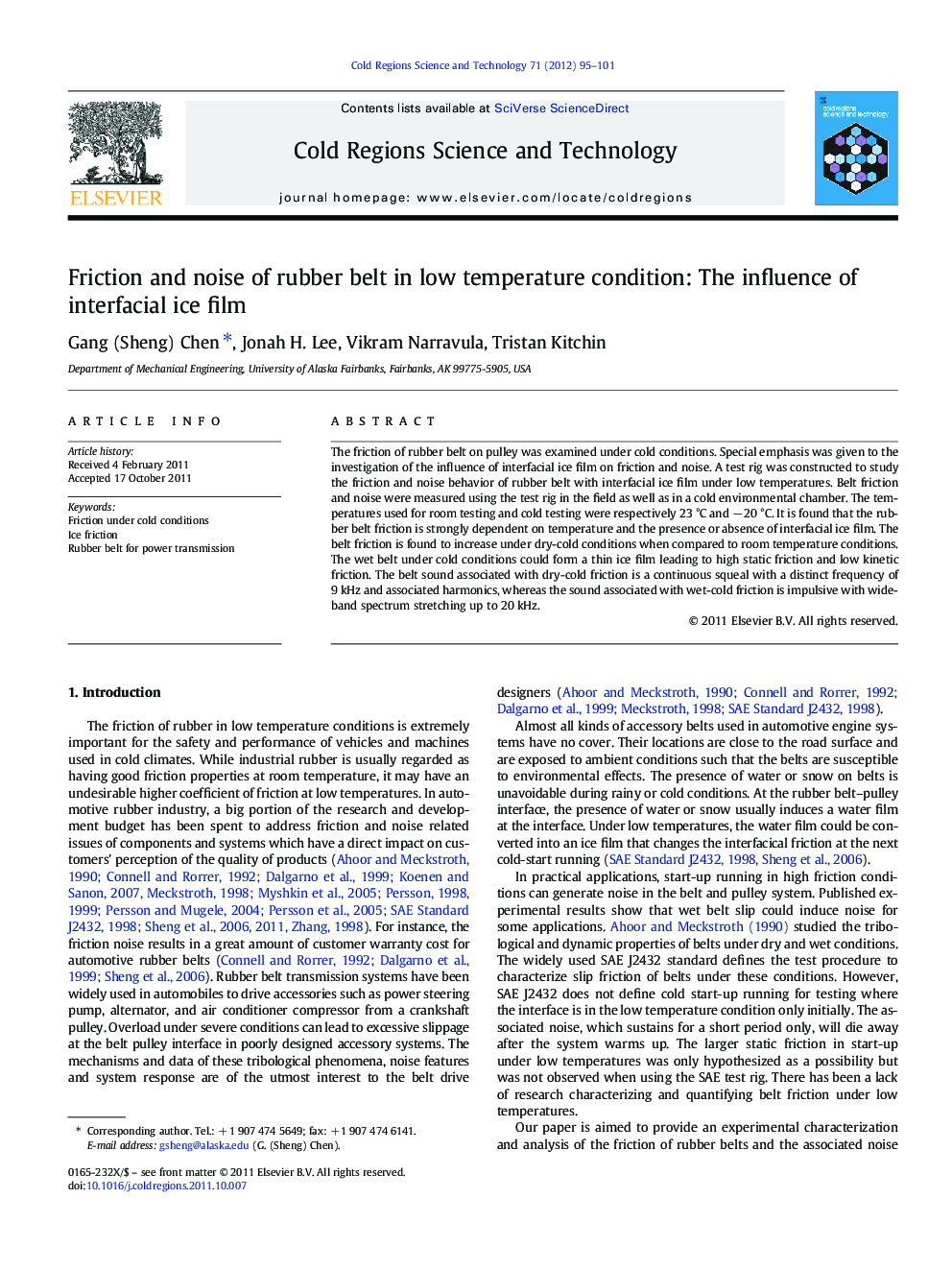| Article ID | Journal | Published Year | Pages | File Type |
|---|---|---|---|---|
| 4676016 | Cold Regions Science and Technology | 2012 | 7 Pages |
The friction of rubber belt on pulley was examined under cold conditions. Special emphasis was given to the investigation of the influence of interfacial ice film on friction and noise. A test rig was constructed to study the friction and noise behavior of rubber belt with interfacial ice film under low temperatures. Belt friction and noise were measured using the test rig in the field as well as in a cold environmental chamber. The temperatures used for room testing and cold testing were respectively 23 °C and − 20 °C. It is found that the rubber belt friction is strongly dependent on temperature and the presence or absence of interfacial ice film. The belt friction is found to increase under dry-cold conditions when compared to room temperature conditions. The wet belt under cold conditions could form a thin ice film leading to high static friction and low kinetic friction. The belt sound associated with dry-cold friction is a continuous squeal with a distinct frequency of 9 kHz and associated harmonics, whereas the sound associated with wet-cold friction is impulsive with wideband spectrum stretching up to 20 kHz.
► The friction of rubber belt in low temperature condition is strongly dependent on the presence of interfacial ice film. ► The belt friction increases under dry-cold conditions (− 20 °C) when compared to room temperature conditions (23 °C). ► The wet belt in low temperature condition form a thin ice film leading to high static friction and low kinetic friction. ► The belt noise associated with dry-cold friction is a continuous squeal with a distinct frequency of 9 kHz and harmonics. ► The noise associated with wet-cold friction is impulsive with wideband spectrum stretching up to 20 kHz.
